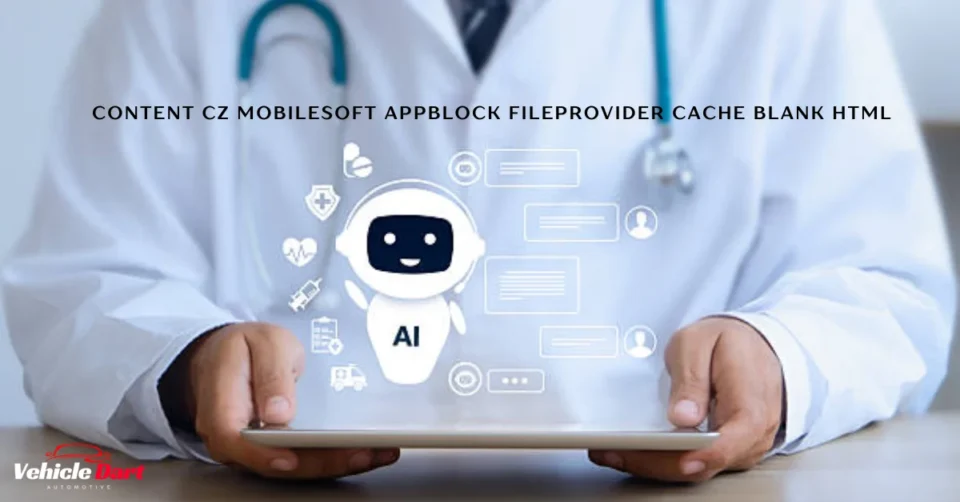Introduction to content cz mobilesoft appblock fileprovider cache blank html
In the fast-evolving world of Android app development, understanding how to efficiently manage and share data is crucial. Enter the realm of content cz mobilesoft appblock fileprovider cache blank html—a framework that simplifies interactions between apps while maintaining security and performance. If you’ve ever struggled with sharing files or managing URIs in your applications, this guide will illuminate the path ahead.
With a focus on optimizing user experience without compromising safety, we’ll delve into best practices for implementing these content URIs effectively. Whether you’re a seasoned developer or just starting your journey, mastering this aspect can elevate your app’s functionality significantly. Let’s explore everything there is to know about leveraging content cz mobilesoft appblock fileprovider cache blank html URIs!
What is content cz mobilesoft appblock fileprovider cache blank html?
Content cz mobilesoft appblock fileprovider cache blank html refers to a specific setup within Android applications that enables the sharing of files securely. This mechanism uses content URIs, which act as pointers to data rather than exposing underlying file paths.
When an app utilizes this approach, it enhances security and privacy by encapsulating access permissions. Instead of directly linking to physical files, developers leverage these URIs to control how other apps interact with their data.
The term highlights a combination of elements: “content” for structured data handling, “mobilesoft” indicating its mobile application context, and “fileprovider,” which is crucial for managing shared access while maintaining user experience. The mention of “cache” suggests performance optimization by storing temporary data effectively.
Understanding this concept is essential for modern Android development practices focused on safe and efficient data sharing among various applications.
Best Practices for Using Content
When it comes to using content effectively, clarity is key. Make sure your URIs are easy to understand and navigate. This not only helps developers but also enhances user experience.
Utilize consistent naming conventions for your fileprovider paths. A well-structured URI can save time during debugging and maintenance phases.
Be mindful of permissions associated with your content provider. Clearly define who has access and what actions they can perform on the data.
Consider implementing caching strategies to improve performance without compromising security. Users appreciate fast load times, especially when dealing with media-rich apps.
Always test your URIs in various scenarios before deployment. Edge cases can reveal potential issues that might affect functionality down the line, so thorough testing is essential for a seamless user experience.
The Importance of Using content cz mobilesoft appblock fileprovider cache blank html URIs in Apps
Utilizing content cz mobilesoft appblock fileprovider cache blank html URIs is crucial for modern Android app development. These URIs serve as a bridge between your application and the data it needs, ensuring smooth interactions.
When apps require access to shared resources or files, these content URIs simplify that process. They allow secure data sharing without exposing internal storage paths, which enhances security.
Moreover, leveraging such URIs improves user experience by enabling features like document picking or media selection from various sources seamlessly. This flexibility can be pivotal in creating engaging applications that meet users’ expectations.
Adopting this approach also helps in adhering to best practices within the Android ecosystem. By utilizing well-defined URIs, developers ensure better compatibility with other components and third-party libraries. This step not only optimizes performance but also streamlines future updates or modifications to your app’s architecture.
Exploring the Different Types of content cz mobilesoft appblock fileprovider cache blank html URIs
When diving into content cz mobilesoft appblock fileprovider cache blank html URIs, it’s essential to recognize their various types. Each serves distinct functions within an Android application.
There are public URIs which allow data sharing across different apps. These can be particularly useful for media files or documents that you want others to access without restrictions.
Then we have private URIs, designed for internal use only. They ensure sensitive information remains secure and accessible solely within your app’s context.
A unique variation includes the temporary URIs used for caching purposes. These enable quick access to frequently used resources while optimizing performance and saving storage space.
Understanding these categories helps developers make informed decisions about data management in their applications, enhancing user experiences through effective URI usage.
How to Implement content cz mobilesoft appblock fileprovider cache blank html URIs in Your App?
Implementing content cz mobilesoft appblock fileprovider cache blank html URIs in your app is a straightforward process. Start by defining a FileProvider in your AndroidManifest.xml. This allows secure sharing of files between apps.
Next, create an XML resource file named `file_paths.xml`. In this file, specify the directories you want to share. Use “ tags to define public directories or specific files.
After setting up the FileProvider, generate content URIs for your files using the `getUriForFile()` method. This will ensure that other applications can access these files securely without exposing their direct paths.
Don’t forget to handle permissions properly! Ensure that the necessary read and write permissions are granted at runtime if you’re targeting Android 6.0 (API level 23) or higher.
Testing your implementation thoroughly across different scenarios will help catch potential issues early on and improve user experience significantly.
Common Mistakes and Pitfalls to Avoid
When working with content cz mobilesoft appblock fileprovider cache blank html URIs, it’s easy to make mistakes that can lead to problems down the line. One common pitfall is failing to validate user input. Neglecting this step can open your app up to security vulnerabilities.
Another frequent error is hardcoding URIs directly into your code. This practice makes maintenance a hassle and can create issues when updates are needed. Instead, consider using constants or configuration files for better flexibility.
Also, remember the importance of permissions. Granting too many permissions may compromise user trust and security. Always follow the principle of least privilege.
Don’t underestimate testing in various environments. A URI that works perfectly on one device might fail on another due to differences in Android versions or configurations. Ensure thorough testing across multiple devices for a seamless experience.
Best Practices for Managing and Securing Content URIs
Managing and securing Content URIs is crucial for any Android application. Start by ensuring that your app only exposes necessary content. Limit access to sensitive data by implementing proper permissions.
Always validate user inputs when dealing with URIs. This helps prevent potential attacks, such as injection vulnerabilities. Use the `FileProvider` class wisely; it allows you to share files securely between apps while maintaining control over your file paths.
Consider using secure methods like HTTPS for any external content interactions. It encrypts data in transit, protecting users from man-in-the-middle attacks.
Monitor and audit URI usage regularly. Keeping track of how these are accessed can help identify unusual patterns or unauthorized attempts to reach your app’s content.
Maintain thorough documentation on your URI structure and security measures. Clear guidelines assist developers in understanding best practices, reducing the likelihood of errors during development or updates.
Conclusion
Content cz mobilesoft appblock fileprovider cache blank html is a crucial aspect of Android app development. Mastering its use can significantly enhance your application’s efficiency and user experience. By understanding what these URIs are, how to implement them effectively, and the common pitfalls to avoid, you set yourself up for success.
Utilizing best practices in managing and securing content URIs ensures that your applications run smoothly while safeguarding users’ data. As technology continues to evolve, keeping abreast of these developments will empower you as a developer.
Explore the various types of content URIs available and leverage their capabilities. The more comfortable you become with implementing them, the better equipped you’ll be to create seamless apps that users love. With attention to detail and a focus on security, your journey into using content cz mobilesoft appblock fileprovider cache blank html will yield positive results for both you and your audience.
Discover amazing insights—explore the Vehicle DART and see what you’ve been missing!

